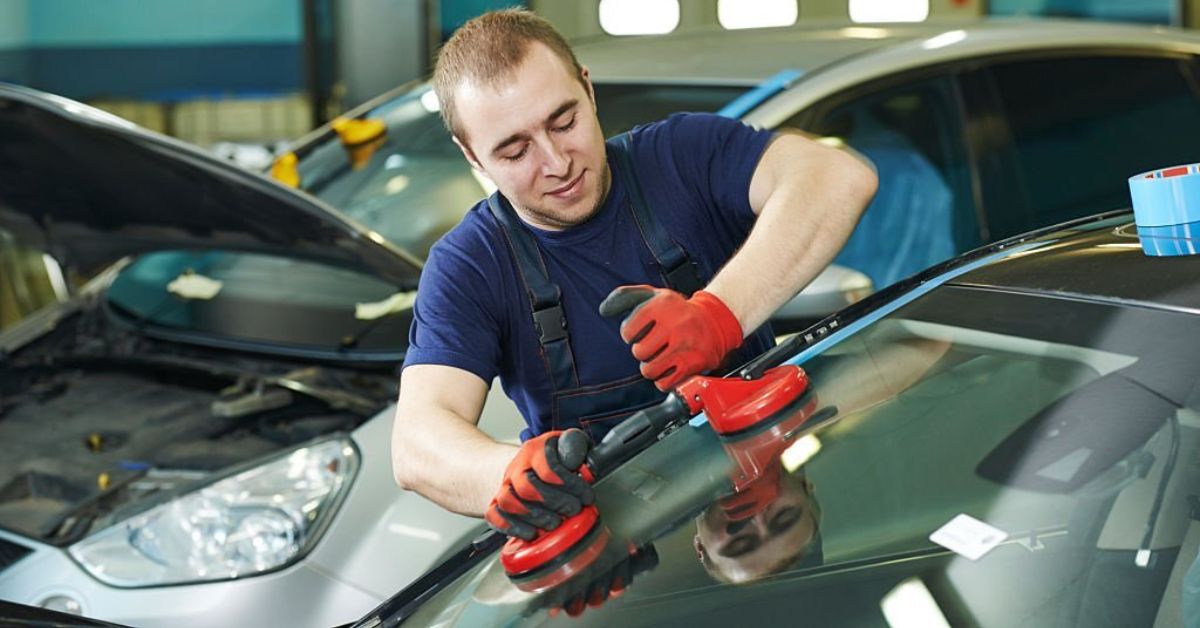The Science Behind Windshield Replacement

Have you ever pondered over why a small crack in your car’s windshield can sometimes necessitate a full replacement?
Or why your windshield appears to shatter differently than regular glass? The answers lie in the fascinating science behind windshield technology and replacement.
When addressing automotive glass damage, it’s essential to consider not only windshield replacement but also the significance of timely and professional car door glass replacement to maintain overall vehicle safety.
In this comprehensive guide, we’ll delve into the intricate details of how windshields function, why they’re indispensable for your safety, and the scientific intricacies behind their replacement process.
The Crucial Role of Windshields
The car’s windshield serves as more than just a piece of glass; it’s a meticulously engineered pivotal safety feature designed to safeguard you and your passengers.
Serving as a barrier against road debris, and adverse weather conditions, and even providing structural support during collisions, the windshield is an indispensable component of your vehicle’s safety system.
Additionally, it plays a pivotal role in upholding the structural integrity of your car, particularly in rollover accidents.
Understanding Laminated Glass Composition
In stark contrast to regular glass, manufacturers craft windshields from laminated safety glass. This specialized glass consists of two layers of glass enclosing a layer of polyvinyl butyral (PVB) resin.
Through lamination, we fuse these layers together, resulting in a resilient and durable material.
In addition to its strength and durability, laminated safety glass also provides added benefits such as noise reduction and UV protection.
By acting as a sound barrier, the PVB layer improves driving comfort by attenuating outside noise. It also filters out harmful UV rays, protecting the passengers and interior of the vehicle from sun damage.
Mechanism of Laminated Glass
The hallmark feature of laminated glass is its ability to hold together when fractured. Upon impact, the outer layer may fracture, but the inner layer remains intact, preventing glass shards from dispersing and causing harm to occupants.
This inherent property substantially reduces the risk of injuries in the event of an accident. People widely use laminated glass in automobile windshields, building windows, and other applications where safety and security are of paramount importance.
Apart from its safety benefits, laminated glass also offers sound insulation and improved energy efficiency, making it an ideal choice for modern buildings.
Windshield Damage and its Implications
Despite their robustness, windshields are susceptible to damage from various sources such as rocks, debris, temperature fluctuations, and accidents.
A seemingly minor chip or crack can compromise the structural integrity of the windshield, impairing visibility and posing a significant safety hazard.
If left unchecked, even a tiny chip or crack can quickly grow into a larger issue that requires replacement. That’s why it’s important to address any damage to your windshield as soon as possible.
Step-by-Step Replacement Process
When a windshield sustains damage beyond repair, replacement becomes imperative. The Tesla windshield replacement process encompasses several meticulous steps:
Removal
Using specialized tools, the damaged windshield is carefully extracted from the vehicle to mitigate further damage.
After the damaged windshield is extracted from the vehicle, the technician will thoroughly clean the area to remove any remaining debris or glass fragments.
Preparation
A thorough inspection of the windshield frame is conducted to identify any signs of corrosion or damage.
Remedial measures are undertaken as necessary to ensure a seamless fit for the new windshield. After the inspection, any rust or corrosion is treated and repaired. The frame is then cleaned and prepared for the installation of the new windshield.
Installation
The new windshield, pre-treated with adhesive, is meticulously positioned and bonded to the vehicle’s frame. Precision is paramount to achieve a secure and watertight seal.
Curing Time
The adhesive necessitates adequate time to fully cure. During this period, it is imperative to refrain from driving or subjecting the windshield to stress, allowing for optimal bonding.
The Science Behind Adhesive Bonding
The adhesive employed in windshield replacement typically comprises a polyurethane-based sealant renowned for its robust bonding properties and resilience to diverse environmental conditions.
When applied between the windshield and the frame, the adhesive forms a formidable bond, bolstering the structural integrity of the vehicle.
Prioritizing Safety
Ensuring the proper replacement of a windshield is paramount for upholding vehicle safety. A subpar installation may compromise the structural integrity of the car, escalating the risk of injuries during accidents.
Thus, it is imperative to entrust the replacement to certified technicians adhering to industry standards and employing premium-quality materials.
In the End
In essence, the science behind windshield replacement underscores the ingenuity and technological advancements driving automotive safety.
Acquiring a deeper understanding of laminated glass composition, the intricacies of adhesive bonding, and the significance of meticulous installation can foster a profound appreciation for the indispensable role played by windshields in safeguarding lives on the road.
Therefore, when the need for windshield replacement arises, remember the science behind it and prioritize safety above all else.





